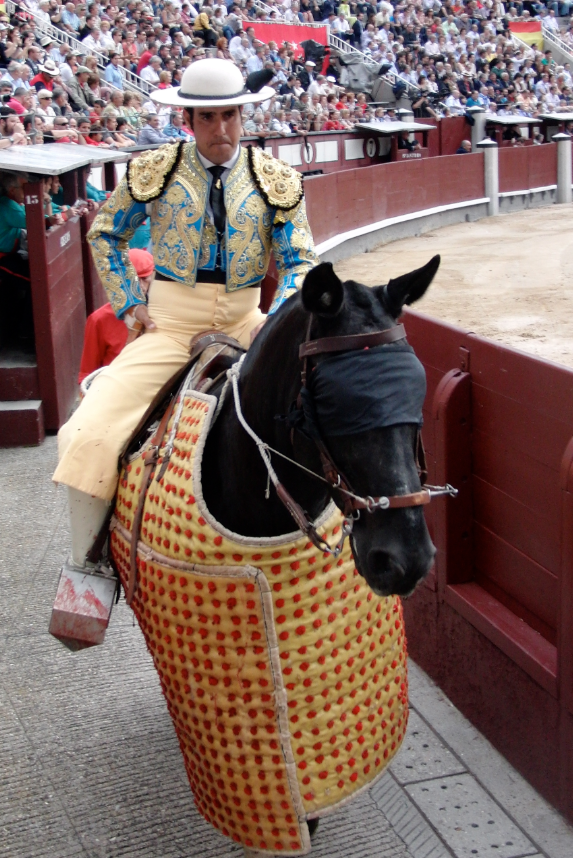Military Stuff
- I'm not set on what time period he comes from, or even if he's a soldier, but I want him to have soldier ties, even if he fled to America to avoid having to fight a war.
- If a soldier, he's probably a low rank foot soldier, but two friends have made me want him to relate to horses, and I've already taken inspiration from Toreadors in the past, for his outfit.
- The current goal is for him to be living somwehere within the late 1700s to early 1900s.
- I love the idea of him being an immigrant to the "New World," which would put him in the late 1700s/early 1800s (when using the "New World" terminology).
- But I also love the Spanish-American War, which would instead put him in the late 1800s/early 1900s. It'd also make him being interested in Figure Skating possible.
- "There were myriad reasons for leaving Spain in the first two decades of the 20th century: The Spanish economy was in shambles following the loss of its colonies in Cuba, the Philippines, Guam, and Puerto Rico after the Spanish-American War of 1898, and military conscription meant that young men could expect to die in similar bloody battles in Northern Africa as the former imperial power dwindled." (Source: New York University)
- The Hussars of Pavia: Named after a victory in Pavia against France in 1525 (the King of France, was captured by cavalry). This regiment was created in 1684, initially to deal with Italy, then transferred back to Spain after the Spanish Succession War ended. During the Spanish Independent War (Napoleon, 1808-1814), fought. Fought Cubans in the Spanish-American War (1895-1898), the Spanish Civil War (1936-1939), and Campaign of Ifni (Spanish colony in North Africa, 1958). (Source: Spanawar.com)

Source: Kinney Brothers Tobacco Company(Wikimedia Commons)

Source: Artist: Josep Mongrell i Torrent (1870–1937) (Wikimedia Commons)
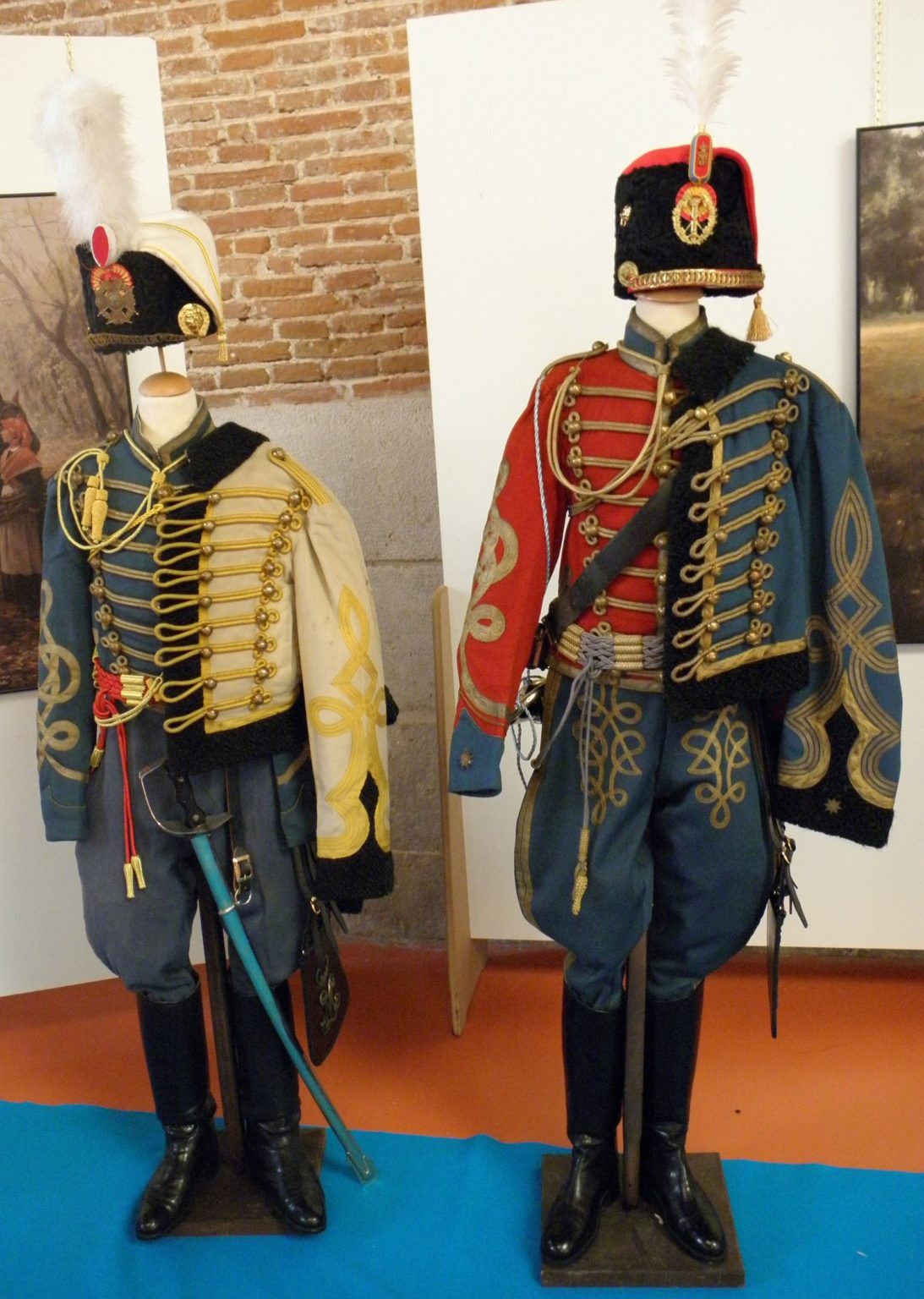
Source: Alabarda.net
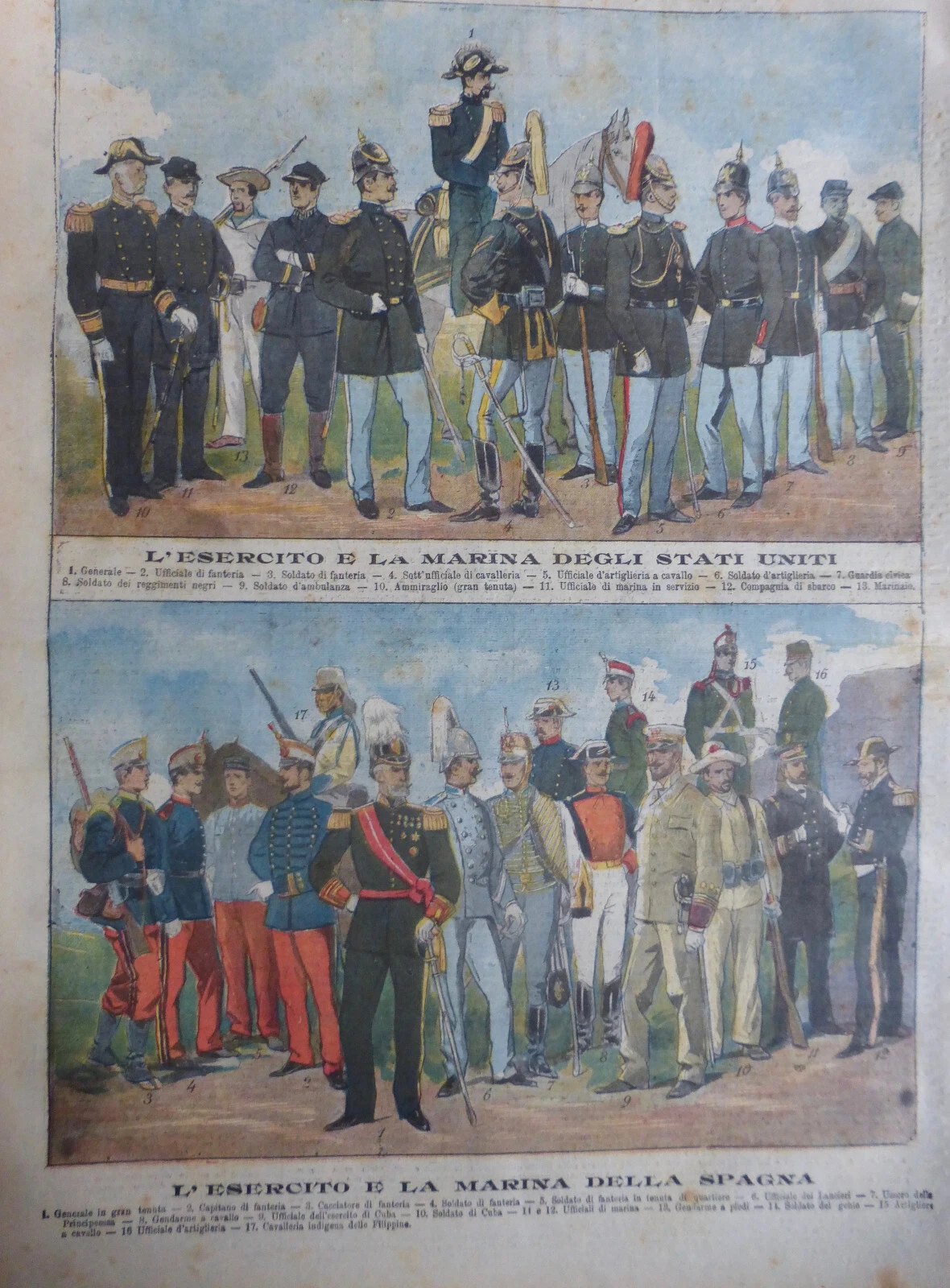
Source: ...Ebay
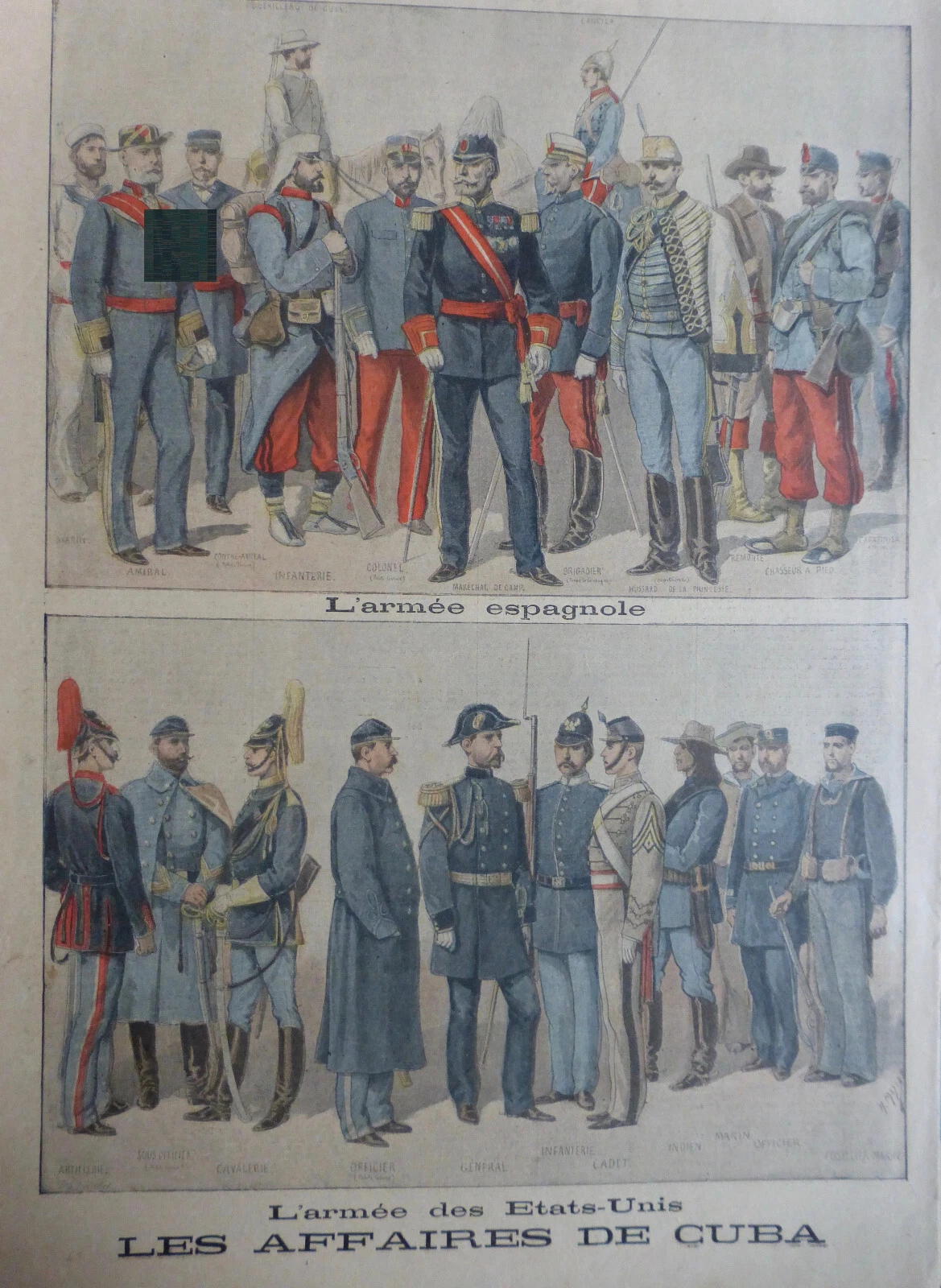
Source: ...The same Ebay
Toreador Stuff
- Toreador/Toreros: Generalized term for a bullfighter. "Toro" = "Bull."
- Matador: The main fighter. The star. "Matar" = "to kill."
- Picador: Rides on a horse and pokes bull with a lance. "Picar" = "to prick." They used to be the main event, while the other bullfighters were there to help direct and finish off the bull, but certain foot bullfighters started becoming popular, later becoming the main attraction, while the picador mattered less. (I'll assume they weren't originally called "Picadors" if they were the main event. Maybe they were just "Toreadors" back then.)
- Traje de luces ("suit of lights"): The outfits they wear.
- Often handmade, with many people working on them for several months. Seven layers of fabric. Influenced by "traditional attire worn by members of the lower classes in Spanish society." Used to have military-badge-like designs, but later melded with wear similar to French royals. 19th century: jacket cut to the ribcage. Silver for less skilled bullfighters, gold for elite. (Source: Phoenix Art Museum)
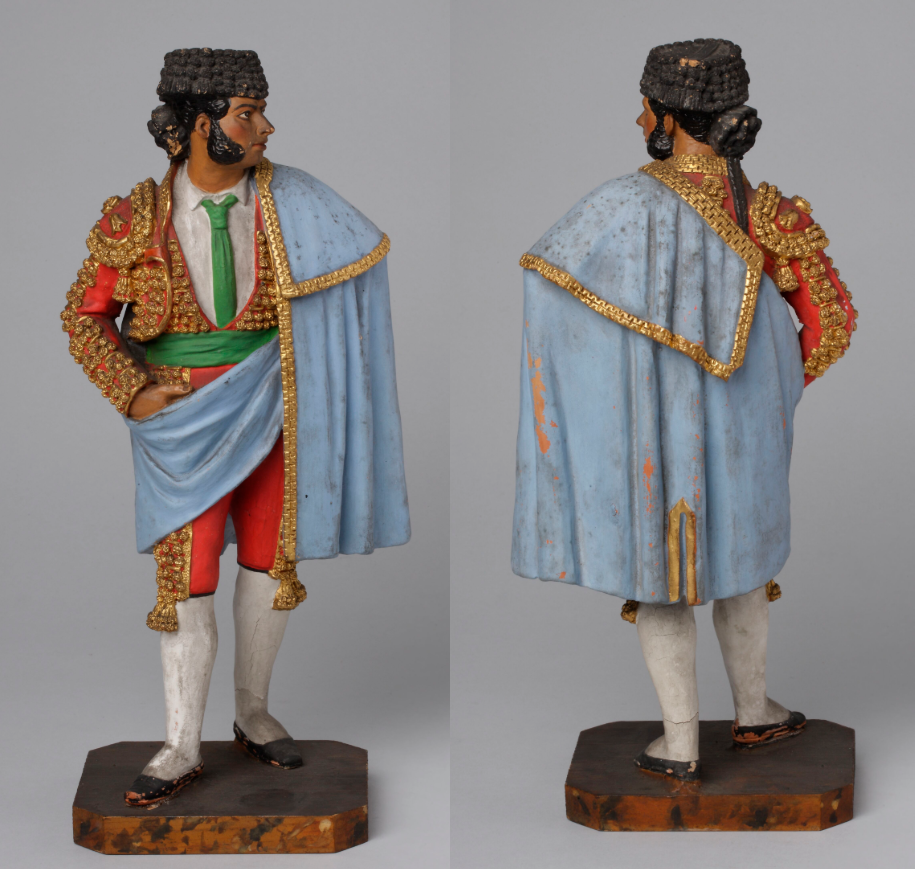
Source: Bibliothèque nationale de France
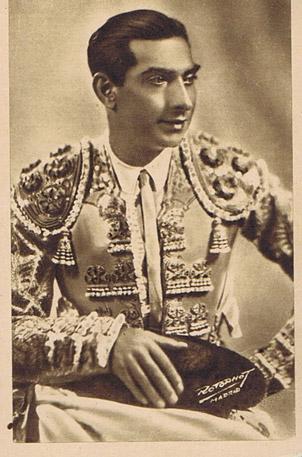
Professional name: Cagancho. Native Spaniard. Most career in Mexico, but occasionally performed in Spain.
From Wikipedia: "The expression "quedar como Cagancho en Almagro" (literally "to end up like Cagancho in Almagro") is used in Spain to mean something like "to make a thorough, utter, embarrassing mess of things in public"."

Source: Édouard Manet (1832–1883) (Wikimedia Commons)

(Description taken from the source):
"Unknown, Parade cape (capote de paseo) of pink satin with heavy gold embroidery (Capote de paseo de satén rosa con pesados bordados de oro), 1950s. Silk satin, cotton, metal thread and metal sequins. Gift of Mrs. Denison Kitchel."
Source: Phoenix Art Museum

(Description taken from the source):
" Traje de luces 9 bullfighter’s suit ) by Fermin, 1950s – 1960s Worn by Antonio Ordonez and Capote de paseo ( bullfighter’s ceremonial cape), 1940s worn by Carlos Azurra. Collection of Bohorquez Domecq, S.L."
Source: Pilar Rossi: Passion for Fashion (Wordpress Blog)
Don Quixote
- By Miguel de Cervantes. Part 1: 1605, Part 2: 1615.
- Considered the first modern novels, and one of the best-selling novels of all time.
- Adventures of a frugal "hidalgo" (lowest nobiility, by blood) nearing 50, from La Mancha. Real name: Alonso Quijano. Reads lots of chivalric romances and decides to become a knight-errant ("caballero andante), under the name "Don Quixote de la Mancha." Brings along Sancho Panza, his squire, who's more down to earth. Don thinks of the world as fantastical, living out a fantasy where he'll go down in history.
- Had influence on other literature, referenced in The Three Musketeers (1844), and the term "quixotic" comes from him.
Minor notes/summary:
- He names his horse "Rocinante."
- Renames Aldonza Lorenzo (slaughterhouse worker) "Dulcinea del Toboso," his "lady love."
- Goes to an inn and deems the prostitutes "ladies."
- Tells a guy to stop beating his slave. It resumes the moment he leaves.
- His horse trips and he gets beaten up, left on the side of the road until a peasant takes him home. While recovering, people burn most o fhis books, hoping it ends his madness. They seal it up, and claim a wizard did it.
- He asks his neighbor (farm laborer, Sancho Panza) to be his squire, and they sneak out. He attacks windmills, which he considers giants, tries to "free" a lady from two friars, goes to an "enchanted" inn, leaving without paying. He finds the "legendary helmet of Mambrino." Blablabla, Sancho is sent to deliver a letter to Dulcinea, but he instead finds some others and plans to trick Quixote into coming home, using a woman they find in the forest to pretend to be Princess Micomicona. He's arrested for freeing slaves, and is locked in a cage, beaten, then brought home.
- Part 2 includes characters who read Part 1, like a duke and duchess, also fond of chivalry. They play along, saying Sancho needs to give himself 3,300 lashes to free Dulcinea from an enchantment, which Sancho pushes back on. Quixote returns home, deathly ill, and gets over his mental illness, being Alonso Quixano again. He apologizes and goes against books on chivalry.
- (Quoted from Wikipedia): "The Spanish suffix -ote denotes the augmentative—for example, grande means large, but grandote means extra large, with grotesque connotations. Following this example, Quixote would suggest 'The Great Quijano', an oxymoronic play on words that makes much sense in light of the character's delusions of grandeur."
- (Quoted by Wikimedia): "1869 The Idiot by Dostoyevsky. Prince Myshkin, the title character of the novel, was explicitly modeled on Don Quixote"
- "The pot calling the kettle black" comes from this.
Ship of Theseus/The Family Knife
- "Mentioned by Plutarch and later modified by Thomas Hobbes [in De Corpore], the ship of Theseus has spawned a variety of theories of identity within modern and contemporary metaphysics." The original planks are stored in Piraus (port in Athens), and the old planks are assembled to form the Piraean ship. "By Leibniz’s law (and common sense), the Aegean ship and the Piraean ship are not the same ship. But which (if either) is the same ship as the Ariadne? The problem of the ship of Theseus is the problem of finding the right answer to that question." (Source/quotes: Brittanica.)
- Theseus is the man who slew the Minotaur in Crete.
- if a = b and b = c, then a = c
- French: Jeannot's knife: blade and handle both changed 15 times. In Spain, it's called "the family knife," but I haven't seen anyone share the original Spanish text.
